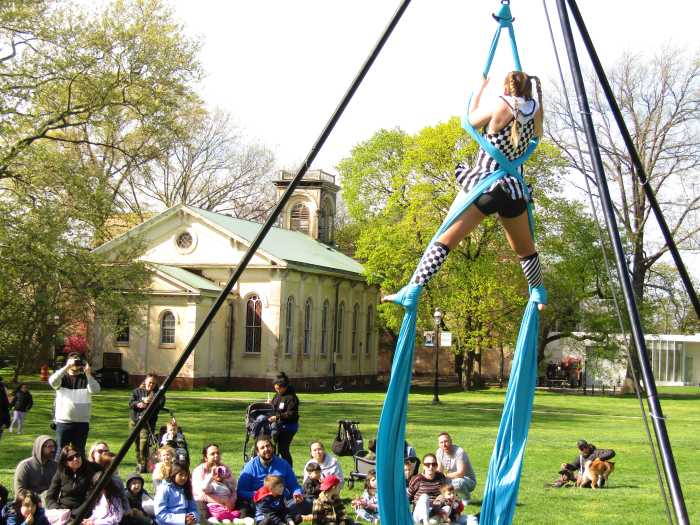
It seems like just days ago when I waited patiently for my son’s first little biters to erupt in his infant mouth. Those days somehow melted magically into years and before I knew it, I could hear the Tooth Fairy fluttering about.
Like many parents, I wondered: what is developmentally normal when it comes to baby tooth loss, how does the tooth-obsessed fairy collect her pearly prizes, and what is the paying pixie’s going rate for a baby tooth these days?
Losing Baby Teeth
A Mentone dentist Dr. Jill Jenkins says, in general, children lose their first tooth between the ages of four and seven with teeth falling out in the order in which they first came in.
Should you yank a loose tooth? “Usually, the best policy is to let it come out on its own,” Jenkins says. “If the other tooth is coming in, parents can have their child suck on a popsicle to numb the gums and eat pizza crust, carrots or apples. If a tooth is wiggly and we’re not seeing the new tooth, letting your child work through it on his own is usually the easiest way and the least stressful way to go about it.”
Be sure to consult your child’s dentist if you have any concerns.
Read Next | Stepping Out On The Stepmother Journey
Enter the Tooth Fairy
That first loose tooth can cause anxiety for some children. Often, anxiety turns to excitement as children listen to tooth-loss stories exchanged among classmates and anticipate the reward the Tooth Fairy leaves behind.
While the exact origin of the enigmatic Tooth Fairy is steeped in mystery, historically the loss of baby teeth is an important rite of passage.
The earliest known written records regarding baby teeth date from northern Europe and describe a tann-fe, or tooth fee, in which money was paid for a baby tooth. In the Middle Ages, Europeans, fearing witches could curse their children if they acquired their baby teeth, buried the teeth in the ground. The Vikings wore baby teeth as jewelry considering them good luck talismans in battle. Other cultures fed the teeth to animals believing the adult tooth would resemble the animal’s powerful, strong teeth.
Today, countries all over the world continue to mark the loss of baby teeth with various customs. In Spain, France, Italy and Mexico, for example, the Tooth Fairy appears as a small white mouse or rat, symbolic because rodents have strong teeth that never stop growing. In Sweden, the baby tooth is placed in a glass of water where it is mysteriously replaced overnight with coins. And, it is customary in much of the Middle East for baby teeth to be thrown towards the sun and in Asia, onto the roof.
The Tooth Fairy as many of us know her, appeared in the early 1900s.
Read Next | 16 Ways to Save Your Kids’ Artwork
Cups, Pillows, Pockets and Doors
The Tooth Fairy isn’t picky about how she collects baby teeth. Lori Poland grew up placing her baby teeth in a clear glass of water on her nightstand. She says she loved fishing a wet $2 bill out of the cup the next morning, setting it out to dry and storing it in her memory box.
Although a tooth placed in a plastic ziplock bag or envelope tucked under the pillow should do the trick, many parents opt for a Tooth Fairy pillow or pouch for their youngster. Retailers offer an assortment of pillows or try making your own.
Monica Bradford designed a Tooth Fairy Pocket for her 6-year-old son when he lost his first tooth.
“He placed his tooth in the pocket, hung it on his bedpost and woke up to find $2 for his first tooth,” she says. (For instructions on making your own Tooth Fairy Pocket, visit Bradford’s blog at http://scrapinspired.com/2011/10/tooth-fairy-pocket/.)
Cathy Green, mom of three, says the Tooth Fairy enters their home through a small ceramic door that Green’s stepmother designed. The door is outside the kids’ bedrooms. After collecting the tooth from a small box under the child’s pillow, the Tooth Fairy replaces the tooth with her reward and leaves the box next to the tiny door.
Read Next | This Is How to Make Dining Out with Kids Easier
What Is the Going Rate for the Tooth Fairy?
According to a 2015 survey conducted by Visa, the tooth fairy is tightening her belt. Kids are receiving an average of $3.19 per tooth. That’s down 24 cents from last year.
Beth Foster says that the Tooth Fairy typically pays $1 per tooth although her daughter Logan, 6, discovered a $5 payout under her pillow for her fifth tooth.
“This is a Foster tradition and I’ve been assured the good old fairy does not leave $10 for the tenth,” Foster says.
What does the Tooth Fairy do with those teeth?
Legend says that the Tooth Fairy tosses the teeth up to the sky and they become stars.
Naturally, many theories exist. Foster’s daughter Logan says, “The fairy uses her wand to shrink the teeth to a very small size so she can carry them in a bag with her from house to house. She then takes the teeth to Santa so he can use them to make toys.”
Whatever she does with them, with each tooth lost, adulthood gains another foothold on our kids. No wonder through the ages we’ve found ways to mark this stage in our kids’ lives, which seems as fleeting as the Tooth Fairy herself.
By Christa Melnyk Hines, a freelance journalist who, together with her husband are the parents of two boys. The Tooth Fairy visits their home frequently these days. Christa’s latest book is Happy, Healthy & Hyperconnected: Raise a Thoughtful Communicator in a Digital World.

Read Next | Learn about All the Best Pre-school or Daycare Centers on Staten Island







